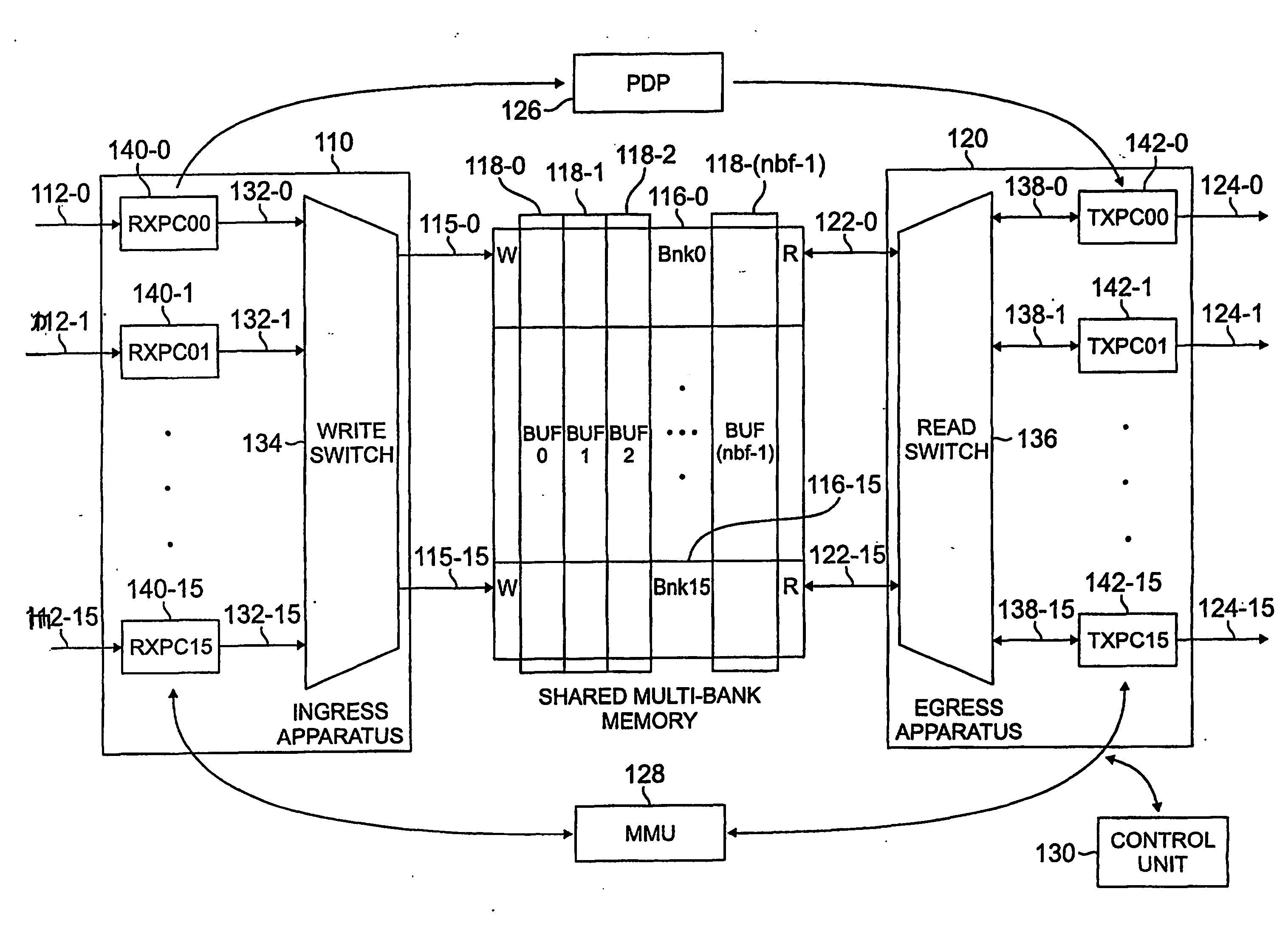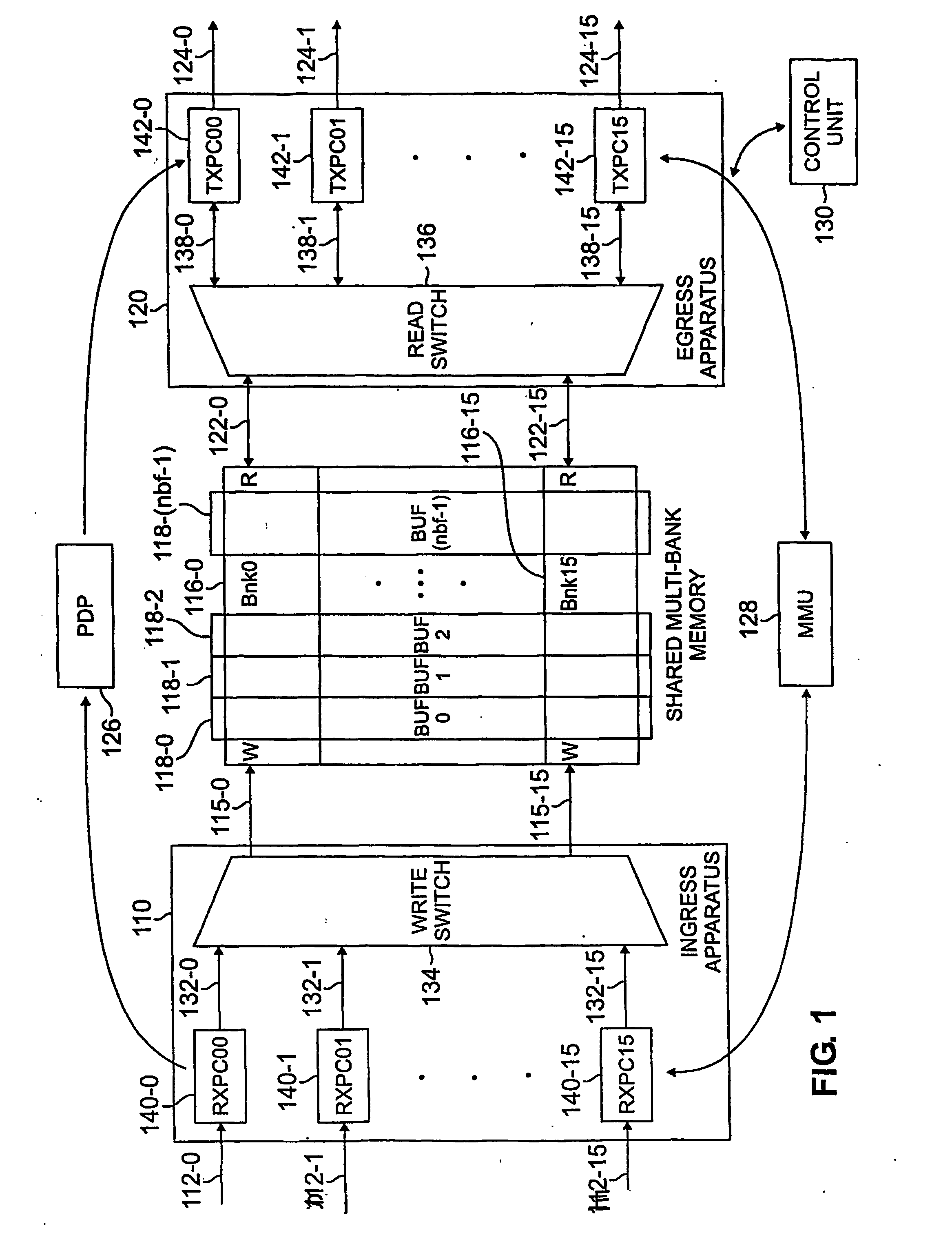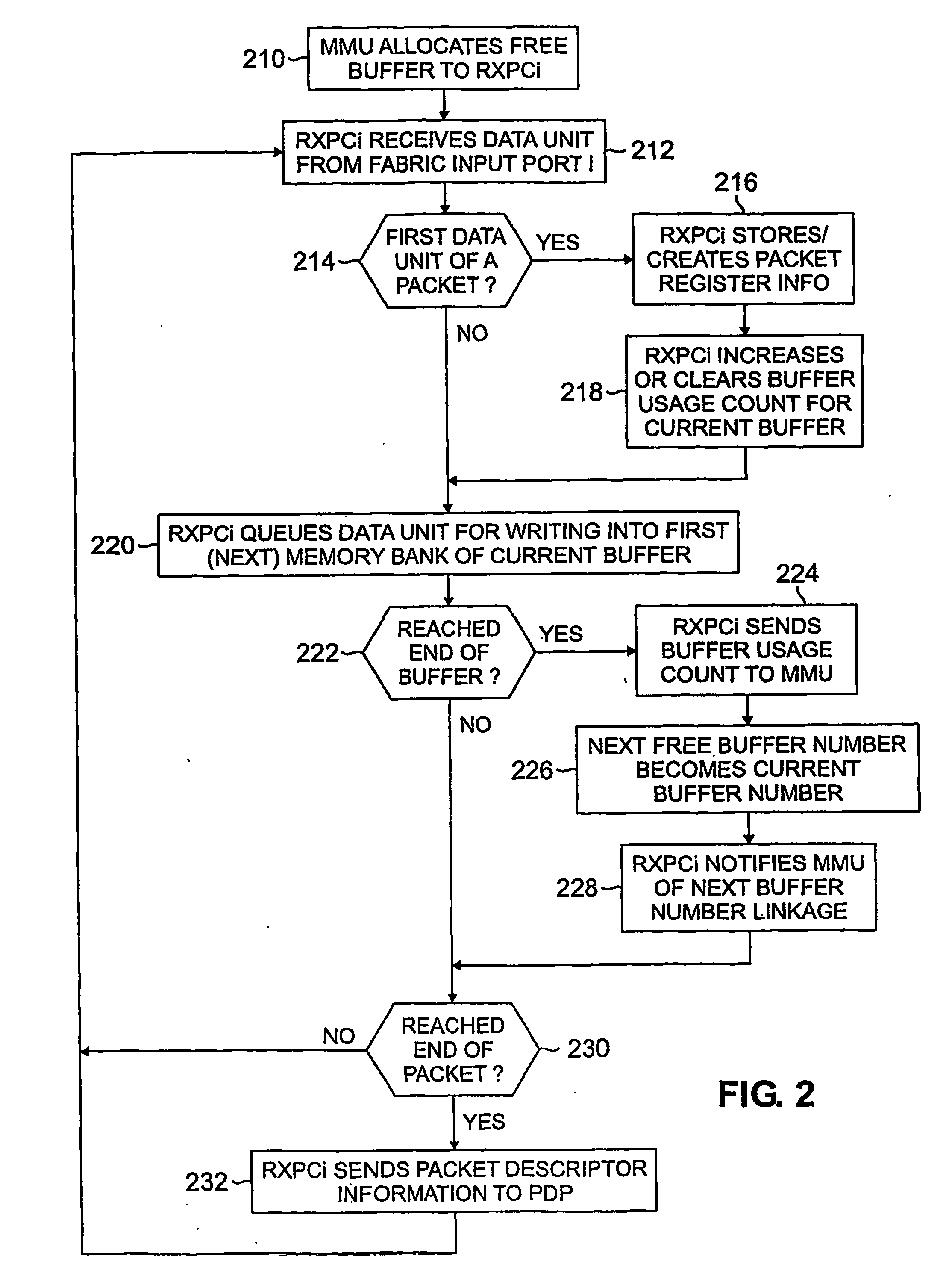Method and apparatus for shared multi-bank memory in a packet switching system
a packet switching and multi-bank technology, applied in the field of packet-based switching fabrics, can solve the problems of insufficient speed to transfer multiple gigabits of data per second, head of line blockage, etc., and achieve the effect of further enhancing buffer memory utilization
- Summary
- Abstract
- Description
- Claims
- Application Information
AI Technical Summary
Benefits of technology
Problems solved by technology
Method used
Image
Examples
Embodiment Construction
[0024]FIG. 1 is an overall block diagram of a shared memory switch incorporating features of the invention. In the present detailed description, a “data unit,” as that term is used herein, refers to the amount of data transmitted in parallel over a given data path. Typically data unit types include a byte, word, double word, and quadword. The size of a data unit is specific to the data path; a data unit as transmitted over one data path might have a different size than a data unit as transmitted over a different data path, even within the same system. In the embodiment of FIG. 1, a data unit is a quadword for all visible data paths.
[0025] A block is a more global concept as used herein, and does not depend on the data path size. If a particular data path transmits an entire block of data in parallel, then the block, by definition, contains only one data unit. If the data path transmits only half of each block at a time, then for that data path, a block contains two data units. In t...
PUM
 Login to View More
Login to View More Abstract
Description
Claims
Application Information
 Login to View More
Login to View More - R&D
- Intellectual Property
- Life Sciences
- Materials
- Tech Scout
- Unparalleled Data Quality
- Higher Quality Content
- 60% Fewer Hallucinations
Browse by: Latest US Patents, China's latest patents, Technical Efficacy Thesaurus, Application Domain, Technology Topic, Popular Technical Reports.
© 2025 PatSnap. All rights reserved.Legal|Privacy policy|Modern Slavery Act Transparency Statement|Sitemap|About US| Contact US: help@patsnap.com



